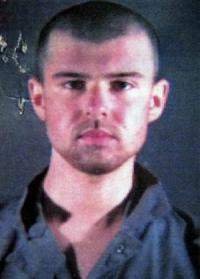-
Responding to the rise in domestic terrorism: Don’t forget prevention
The April attack on a synagogue in Poway, California, was the latest demonstration of the rise in extremist violence in the United States committed not by “jihadists” inspired by ISIS or other international terrorists, but by white supremacists, neo-Nazis or other right-wing groups. Eric Rosand writes in Lawfare that with the Tree of Life Synagogue attacks still fresh in many Americans’ minds, post-Poway discussions further highlighted how the resources and tools available to prevent right-wing extremist violence or domestic terrorism in the United States are dwarfed by those available to deal with the jihadist-inspired violence that data shows to be a much lesser threat. Rectifying this imbalance requires urgent attention.
-
-
The many faces of foreign interference in European elections
Citizens of the European Union’s 28 member states go to the polls this week to choose their representatives to the European Parliament. Following Russian interference in several high-profile elections over the past three years, European governments are on high alert for signs of such meddling on social media or in electoral IT systems. Recent events in Austria and Italy show that foreign authoritarian actors are finding other under-examined, but equally insidious ways to infiltrate campaigns and harm democracy in Europe.
-
-
Can John Walker Lindh be deradicalized?

John Walker Lindh, the former jihadi dubbed the “American Taliban,” was released from prison Thursday after completing 17 years of a 20-year sentence for supporting the Afghan insurgent group. Unlike other Western nations, the U.S. has no rehabilitation programs for former jihadists, leaving them largely to their own devices.
-
-
The 5G fight is bigger than Huawei
The latest salvos in the Trump administration’s campaign against Huawei may prove, at best, to be a Pyrrhic victory—or, at worst, directly undermine U.S. interests and objectives. At the moment, it remains unclear how the recent executive order, which creates sweeping authorities to bar and exclude companies or technologies linked to a “foreign adversary” from the United States, and the addition of Huawei to the government blacklist known as the Entity List will be implemented in practice. Elsa B. Kania writes in Foreign Policy that it is not too late for U.S. President Donald Trump to recalibrate toward the smarter approach needed for such a complex challenge. In the process, the U.S. government should also pursue more proactive policies that concentrate on ensuring future American competitiveness in 5G, the fifth generation of mobile networks.
-
-
The Kremlin’s “tools of malign political influence” undermine democracy
Russia’s “sweeping and systematic malign influence operations” support anti-democratic and anti-Western forces in Europe and the United States, using a variety of tools, from corruption to influence operations, said Heather A. Conley, CSIS senior vice president for Europe, Eurasia, and the Arctic, and director of the Europe Program, in a testimony before the House Foreign Affairs Subcommittee on Europe, Eurasia, Energy, and the Environment, during hearings on “Undermining Democracy: Kremlin Tools of Malign Political Influence.” “The Kremlin undermines and weakens democracies, rendering them unable to respond promptly to Russian military actions or making them beholden to the Kremlin to such a point that a democratic country will support Russia’s interests over its own,” she testified. She highlighted two specific areas in which she is “particularly concerned U.S. citizens and organizations, wittingly or unwittingly, will come under increasing threat of Russian malign influence”: (1) faith-based and ultra conservative
organizations; and (2) opaque financial support for key U.S. influencers. -
-
Sprawling disinformation networks discovered across Europe ahead of EU elections
Investigation uncovers flood of disinformation aiming to influence to forthcoming EU elections. The revelations led Facebook to take down pages with more than 500 million views. The mainly far-right disinformation pages which were shut down by Face book had three times the number of followers than the pages of more established right wing, populist, and anti-EU partiers such as Lega (Italy), Alternative für Deutschland (AfD) (Germany), VOX (Spain), Brexit Party (U.K.), Rassemblement National (France), and PiS (Poland).
-
-
Tweets reveal how ISIS still inspires low-level attacks
By analyzing 26.2 million Twitter comments in the Arabic language, researchers found that despite losing territory, ISIS remains successful at inspiring low-level attacks because of its messaging for a “call for lone jihad.”
-
-
Ghost guns are everywhere in California

Feds say nearly a third of firearms recovered in California are homemade, unserialized, and untraceable. Experts say the accessibility of ghost guns is aided by a cottage industry of retailers selling nearly completed firearms that require no screening to purchase.
-
-
Counterintelligence responsibilities and the 2020 election: What are the rules of the road?
The attorney general has now directed John Durham, the U.S. attorney in Connecticut, to examine how the FBI’s investigation into Russian interference in the 2016 election began, along with related investigations of Trump campaign affiliates. In an interview with Fox News, the attorney general that while it’s important to look at foreign influence, it’s also important to look at whether government agents abused their power. He further defended his use of accusations that “spying” took place. And the president has accused former officials of “treason”. Carrie Cordero writes in Lawfare that despite these comments by the president and the attorney general, there are serious reasons to conduct a review of policies and procedures governing national security investigations involving political campaigns. It is important to ensure that investigators have the proper legal guidance, policy direction and rules of the road to do their jobs as the country approaches the 2020 election. But the administration’s rhetoric diminishes the legitimate value that this review could bring.
-
-
Cyber-enabled election interference occurs in one-fifth of democracies
Cyber-enabled election interference has already changed the course of history. Fergus Hanson and Elise Thomas write in The Strategist that whether or not the Russian interference campaign during the US 2016 federal election was enough to swing the result, the discovery and investigation of the campaign and its negative effects on public trust in the democratic process have irrevocably shaped the path of Donald Trump’s presidency.
-
-
Hacking democracies
A new report from an Australian think tank offers an in-depth, and sobering, analysis of Russia’s campaign to undermine Western democracies by weaponizing social media, and, to a lesser extent, China’s similar, if lower-key, campaign against neighboring Asian countries. “Democracies need to look at better ways of imposing costs on adversaries,” the report’s authors say.
-
-
Eric Oliver on the science of conspiracy theories and political polarization
The “birthers,” “Pizzagate,” anti-vaxxers. It seems that belief in conspiracy theories is on the rise. At the same time, our polarization is worse than ever. People can hardly even maintain a conversation across political or cultural lines. Could the underlying force driving conspiracy theories also be the same one that’s dividing our country?
-
-
Dystopian Future Watch: Is San Francisco’s facial recognition ban too little, too late?
Life just keeps creeping along, leading us step-by-step closer to living in a Philip K. Dick dystopian future—in real-time. And often, in our surveillance culture, we are willing participants to work alongside Big Brother. “Remember how fun it used to be to see facial recognition and retina scanning in sci-fi movies?” Hermon Leon asks in the Observer. “We loved it in RoboCop and Blade Runner, right? Now, many of these biometric technologies have become a nightmarish reality. Let’s take a look.”
-
-
Be afraid of the world, be very afraid
Who’s right: Cassandra or Dr. Pangloss? Are we on the brink of serious trouble, as Cassandra of Greek myth prophesied, or is all for the best “in this best of all possible worlds,” as the fictional Pangloss insisted in Voltaire’s Candide? “I’m generally a fairly upbeat guy, despite my realist proclivities and my recurring frustrations at the embarrassing state of U.S. foreign policy,” Stephen M. Walt writes in Foreign Policy. “But today I’m going to indulge my inner Cassandra and describe the five bad things that worry me today. I hope I’m wrong.”
-
-
Google cuts Huawei access to Android software updates
Google said on Sunday it was rescinding Huawei’s license to use Google’s mobile phone operating system Android, and Google services such as Google maps and YouTube. The move will force the Chinese technology company to rely on an open-source version of the software. The move follows a presidential executive order prohibiting American companies from using telecommunications equipment made by “foreign adversaries” viewed as posing a threat to U.S. national security.
-
More headlines
The long view
What Does Netflix’s Drama “Adolescence” Tell Us About Incels and the Manosphere?
While Netflix’s psychological crime drama ‘Adolescence’ is a work of fiction, its themes offer insight into the very real and troubling rise of the incel and manosphere culture online.
A Shining Star in a Contentious Legacy: Could Marty Makary Be the Saving Grace of a Divisive Presidency?
While much of the Trump administration has sparked controversy, the FDA’s consumer-first reforms may be remembered as its brightest legacy. From AI-driven drug reviews to bans on artificial dyes, the FDA’s agenda resonates with the public in ways few Trump-era policies have.
The Center Can Hold — States’ Rights and Local Privilege in a Climate of Federal Overreach
As American institutions weather the storms of executive disruption, legal ambiguity, and polarized governance, we must reexamine what it means for “the center” to hold.
How to Reverse Nation’s Declining Birth Rate
Health experts urge policies that buoy families: lower living costs, affordable childcare, help for older parents who want more kids
Foundation for U.S. Breakthroughs Feels Shakier to Researchers
With each dollar of its grants, the National Institutes of Health —the world’s largest funder of biomedical research —generates, on average, $2.56 worth of economic activity across all 50 states. NIH grants also support more than 400,000 U.S. jobs, and have been a central force in establishing the country’s dominance in medical research. Waves of funding cuts and grant terminations under the second Trump administration are a threat to the U.S. status as driver of scientific progress, and to the nation’s economy.
The True Cost of Abandoning Science
“We now face a choice: to remain at the vanguard of scientific inquiry through sound investment, or to cede our leadership and watch others answer the big questions that have confounded humanity for millennia —and reap the rewards.”
